The views expressed in our content reflect individual perspectives and do not represent the authoritative views of the Baha'i Faith.
Action, the teachings of all religions say, is a necessary complement to faith and knowledge.
Stated in more practical terms, all personal knowledge is theoretical until it is expressed in some form of action within a human community.
Even in science, we use the laboratory as a place to exercise our theories about reality, to test them in action. In this context Shoghi Effendi, the Guardian of the Baha’i Faith, described in a letter written by his secretary to a young Baha’i that the daily life in a Baha’i community might be considered as a classroom or laboratory wherein we can exercise and develop our knowledge and capacities as spiritual and social beings:
The Baha’i community life provides you with an indispensable laboratory, where you can translate into living and constructive action the principles which you imbibe from the Teachings. By becoming a real part of that living organism you can catch the real spirit which runs throughout the Baha’i Teachings. To study the principles, and to try to live according to them, are, therefore, the two essential mediums through which you can ensure the development and progress of your inner spiritual life and of your outer existence as well.
This inextricable relationship between study and action, between theory and practice, constitutes the twin pillars of true education. Once we have the subjective experience of a verity working in our lives, particularly in our relationships with other human beings attempting the same objectives, we not only confirm the validity of our theoretical learning, but we also appreciate the joy of acquiring this knowledge and subsequently grow eager to learn more.
RELATED: The Way to True Scientific and Spiritual Knowledge
Stated in other terms, the act of learning becomes complete once the freely chosen task of acquiring knowledge expresses itself in a series of freely chosen actions.
For example, we could intellectually learn an immense amount about riding a bicycle. We could study theories of balance, rules of the road, how the various parts of the bicycle work, strategies for care and maintenance. But the fact is that an afternoon or two of actually riding a bicycle can instantly replaces what weeks and months of study might have attempted to teach. The subjective experience of balance, of how to lean into a turn, about what it feels like to hold the handlebars stable as we pump our legs – all of these actions instantly complete the process of transforming theoretical understanding into actual knowledge. What is more, the experience establishes a basis for further expansion of theoretical knowledge. Suddenly all the words describing the experience relate to and derive from our personal action of riding the bike, even if we have had that experience only for a relatively short time.
The same process and principle holds true for metaphysical and spiritual virtues. We could attend countless seminars instructing us about the nature and the value of kindness, particularly as this virtue applies to our relationships with other people. But if we simply engage in several possibly unrelated acts of kindness to other people, and subsequently experience the emotional effect these simple acts have on others, as well as on ourselves, we will instantly become aware of the essential nature and existential benefit of this virtue.
From this point in our education onward, the virtue of kindness will no longer consist of mere words and concepts. We will develop the capability of relating the concept to these particular instances in which we have felt the joy of bestowing and receiving kindness – and the more adept and expansive becomes our practice of this virtue, the more encompassing and complex our understanding and appreciation will be.
Over time, as we implement these spiritual qualities into action, we discover that we can become experts in the art of kindness, of justice, of love, and of every other attribute. We can aspire to be refined practitioners in the art of Godliness. But to become successful at our profession of faith in deeds, we must be willing to make this personal transformation an inalienable part of our daily lives. We must come to think of ourselves as becoming perpetual students in the divine art of spiritual development, because regardless of how proficient we may become, we can always be more adept at this art, so long as we never believe we have achieved a some final stage of advancement, some point of “salvation.”
Bridging the Gap
To a certain extent, we can now appreciate how physical exercises and processes are capable of completing our understanding of both our essential nature as spiritual beings and our spiritual purposes in coming to know and subsequently worship the Creator.
We begin with very rudimentary learning and progress as far as we are capable over the span of this earthly life. We then continue in the next life where we have left off here. We might assume, in other words, that this is how we bridge the gap between ourselves and the Creator.
RELATED: 5 Ways to Prepare for the Next World
But there is much more going on in that gap than we might first realize. In fact, understanding the nature of this gap and all that goes on within it constitutes the most important objective of the remainder of our study.
On the ceiling of the Sistine Chapel, there is a gap between the fingers of God and Adam in Michelangelo’s famed depiction of God empowering Adam, an symbolic expression demonstrating the artist’s awareness that somehow the divine guidance of the Creator must traverse that divide between the metaphysical and physical aspects of reality. To accomplish this task, the Creator has devised specialized beings, the prophets or messengers of God, who, according to Baha’i scripture, preexist in and are fully aware of the spiritual realm, but who willingly assume the task of assuming human form in order to dwell among us that we might be educated by degrees.
While physical reality is replete with symbolic expressions of the attributes of the Creator, without the divine messengers as our guides, none of these ingenious symbols would have much value for us. Those messengers – such as Abraham, Krishna, Moses, Buddha, Christ, Muhammad, and most recently Baha’u’llah – exemplify and then explain to us the “names” (the qualities or attributes) of God that are also revealed in nature and in ourselves, so that we may understand the means whereby we learn how to become appreciative children, loving and adept parents, dutiful and caring husbands and wives, and faithful and friendly neighbors.
But clearly we, as children of God, are not able simply to intuit what we need to know. True, once we have been capably tutored and set in motion, we can build on what we have been taught. Yet because there is an infinite amount for us to learn, we will never outgrow our need for additional assistance, whether as individuals or as a society, whether in this life or in the life to come. Therefore, in the next essays in this series, let us examine exactly how the divine messengers carry out their mission as guides in an otherwise guideless realm.



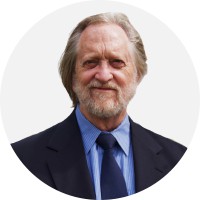





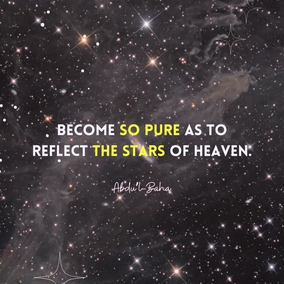

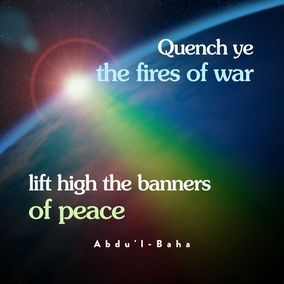
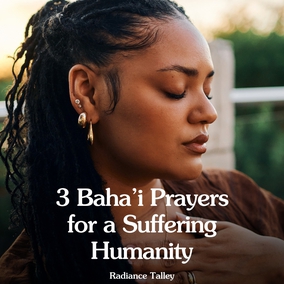

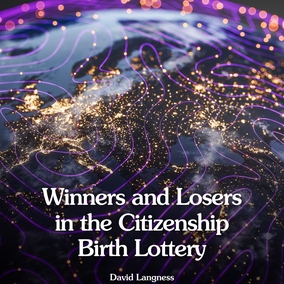

Comments
Sign in or create an account
Continue with Googleor